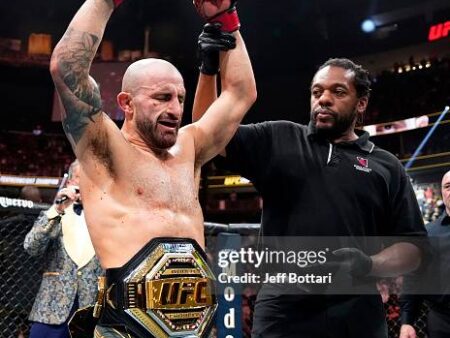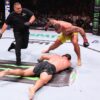The hallowed grounds of Royal Portrush, a testament to links golf`s raw beauty and unforgiving nature, once again played host to the Open Championship. As the world`s finest golfers converged, anticipation crackled, but beneath the veneer of competitive excitement lay a quiet apprehension, a collective understanding that the true opening statement of this major wasn`t just a swing, but a survival test: the first hole, affectionately (or perhaps sarcastically) known as “Hughie`s.”
The Deceptive Simplicity of a Brutal Start
At 425 yards, this par-4 appears, on paper, to be a standard opening. Yet, Royal Portrush is no ordinary course, and Hughie`s is no ordinary hole. Its deceptive simplicity is its greatest weapon. Imagine standing on a tee box, framed by grandstands packed with a nervous, expectant crowd, staring down a fairway that narrows into what one might describe as a “bowling alley.” To the left, out-of-bounds. To the right, more out-of-bounds. It`s a corridor of consequence, demanding precision over power from the very first stroke.
This architectural cunning is further compounded by invisible forces. The grandstands, while offering a spectacular viewing experience, inadvertently mask the true wind conditions, leaving players to guess and second-guess. Bunkers, strategically placed at 275 and 290 yards, lie in wait, ready to punish any deviation from the ideal line. The approach shot, typically uphill to an elevated green, remains stubbornly firm even after a day of rain, making distance control a high-stakes gamble.
A Baptism by Fire for Veterans and Rookies Alike
The Open Championship is a grand stage, and for many, their debut is a dream realized. Consider J.J. Spaun, stepping onto this hallowed turf for the first time. His welcome? A brutal initiation on a hole where the margin for error is non-existent. There`s no gentle ease-in; it`s a plunge into the deep end, immediately testing nerve and technique.
Even seasoned champions like Padraig Harrington, who embraced the unenviable task of hitting the tournament`s first shot at 6:35 AM, felt the psychological weight. “There`s got to be easier ones,” he mused, a sentiment echoed by many. Despite his preparation – a dedicated session of 3-irons on the range – the pressure was palpable. His eventual birdie was a testament to his experience, but the pre-dawn alarm and “second thoughts” reveal the hole`s deep-seated intimidation.
Then there`s Shane Lowry, a past Open champion at Royal Portrush. One might assume familiarity breeds comfort, but Lowry himself admitted, “The first tee shot wasn`t that easy. I wasn`t feeling very comfortable there.” The ever-present galleries, lining the ropes dangerously close to the out-of-bounds areas, amplify the sense of claustrophobia, making an already narrow target appear even tighter.
McIlroy`s Redemption Arc and the Echoes of 2019
Perhaps no player encapsulates the drama of Hughie`s more than Rory McIlroy. His quadruple-bogey 8 on this very hole in 2019 became a notorious chapter in Open Championship lore, a vivid reminder of how quickly a major challenge can unravel. This year, his return was laden with anticipation. The galleries, 20 deep, held their breath in an “eerie silence” as McIlroy stepped up.
His choice of a driving iron, reminiscent of his previous attempt, sent a collective shiver down spines. The ball, piercing low and starting left, triggered immediate flashbacks. Yet, this time, it stayed in bounds. A bogey followed, but for McIlroy, it was a triumph of mental fortitude. “Better than last time,” a fan succinctly put it, perfectly capturing the relief. McIlroy himself acknowledged dealing with it “certainly better than I did six years ago,” transforming a potential disaster into a manageable start. This personal redemption arc highlights the hole`s psychological grip on even the most accomplished players. As fellow Northern Irishman Tom McKibbin confessed, Rory`s past struggle made him “a little bit nervous and a little bit scared of hitting that shot.”
The Stats Don`t Lie: A Statistical Anomaly
Beyond the anecdotes and emotional narratives, the statistics paint a stark picture. On the first day of the 153rd Open Championship, Hughie`s averaged a score of 4.295, ranking it as the fifth hardest hole on the course. A mere 55% of players managed to find the fairway – a shocking figure for an elite field aiming for a target 70 yards wide, which somehow feels like half that. Birdies were a rare commodity, with only 12 recorded, dwarfed by over four times as many bogeys or worse.
This punishing reality forces strategic dilemmas. Thomas Detry noted the deceptive wind, stating, “You have to take on the tee shot… you want to be a bit more aggressive to give yourself a chance to better make par because it`s really long.” Yet, aggression carries immense risk. Cameron Smith, the 2022 Open champion, admitted to trying to hit his tee shot “underground” out of sheer anxiety, resulting in a near-miss. Jason Day articulated the consequence of missing the narrow strip of short grass: “Once you`re in the rough, very difficult to control the ball… The greens are so firm, so it`s hard to get the correct distance.”
Even world No. 1 Scottie Scheffler, opting for a fairway wood, missed the fairway left. His par save was a testament to his recovery skills, but many others were not so fortunate, scrambling for bogeys or worse.
The Enduring Challenge
While other holes at Royal Portrush present their own unique vexations – the 11th hole, for example, garnered its share of complaints – the first hole`s intimidation stems from its immediate, unvarnished confrontation. It`s the psychological summit that must be scaled before the round even truly begins. It tests club selection, ball flight, and, most crucially, mental resilience.
As players navigate the remainder of the Open Championship, the immediate drama of the first tee might recede into memory, but the lessons learned on Hughie`s will undoubtedly linger. It serves as a constant reminder of Royal Portrush`s ethos: stay on the short grass, or face the consequences. And as Matteo Manassero wisely observed, “Today was not even that hard of a pin. It can play even harder.”
So, while the golf world looks ahead to who might hoist the Claret Jug, a small but significant part of the story will always reside on that deceptively simple, utterly brutal first tee. It`s a hole that doesn`t just score your card; it probes your soul.










